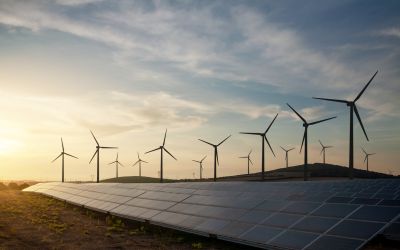How to take Climate Action?
How can we take Climate Action? It’s not as simple a question as it looks. Talking about the need to reduce CO2 emissions isn’t action in itself, but unfortunately it’s much more common than actually reducing them.

How can we take Climate Action? It’s not as simple a question as it looks. Talking about the need to reduce CO2 emissions isn’t action in itself, but unfortunately it’s much more common than actually reducing them.
That’s because reducing our emissions is a difficult prospect, especially for a business. It’s potentially expensive and disruptive, using new technologies and developing new procedures. It’s potentially hard work, and it’s easy to be distracted by dealing with short term problems instead. 2050 is a long way off- can’t this be sorted out in five or ten years’ time?
For a company like Bosch, the challenge seems immense. We are a global industrial concern- close to 400,000 associates in 60 countries on six continents. In 2018 we had a global energy consumption of 7.8 terawatt-hours, which is about the same as the annual electricity consumption of Northern Ireland. The same year, we emitted 3.3 million metric tons of CO2.
Given the scale of what needed to be done, it would be tempting to put things off, or make small, cosmetic emissions reductions to provide a nice story for the annual report. In 2018 we had the carbon footprint of a small country. It takes a long time to turn around a supertanker- surely carbon neutrality for a global business like Bosch is decades away, and the focus should be on gradually reducing emissions?
Actually, no.
In 2007 we set ourselves the target of reducing our CO2 emissions 20% by 2020. Over the next decade we chipped away at the problem and managed to accomplish this goal in 2014, seven years early. This made us realise that we should be a lot more ambitious, and in 2019, we decided to set ourselves a target for Scope 1 and 2 CO2 neutrality- not just by 2050 or 2030, but by 2020. We gave ourselves just over a year to make the change.
It was a tough challenge, but we managed it. Now, Bosch is carbon neutral with all of its more than 400 sites worldwide. We did it by focusing on energy efficiency and generating our own renewable energy as well as buying more green electricity and- in the short term- investing in certified green projects to offset unavoidable CO₂ emissions
For us, this isn’t about “greenwashing” or PR; it’s sound business sense. Any successful business has got to invest in its own future, and few things are more fundamental to future business than the future of the planet. As a company driven by using technology to improve people’s quality of life, we view emissions reduction the same way as research and development- it’s an upfront investment in future business that will pay off further down the line.
There’s still much more to do. By 2030, we want to save 1.7 terawatt-hours, more than one-fifth of our current annual consumption. We are now focusing on driving down emissions in our supply chain and in our products, helping the decarbonisation of the transport, domestic heat and decentralised energy sectors through the use of the Internet of Things and the deployment of hydrogen technology.
So is Climate Action possible if you set your mind to it? Can real change be accomplished quickly? And can an industrial giant achieve ambitious CO2 targets?
Yes, yes and yes. If Bosch can do it, so can you- and if you’d like us to help, get in touch.
Donya Florence Amer
CEO Bosch Climate Solutions






